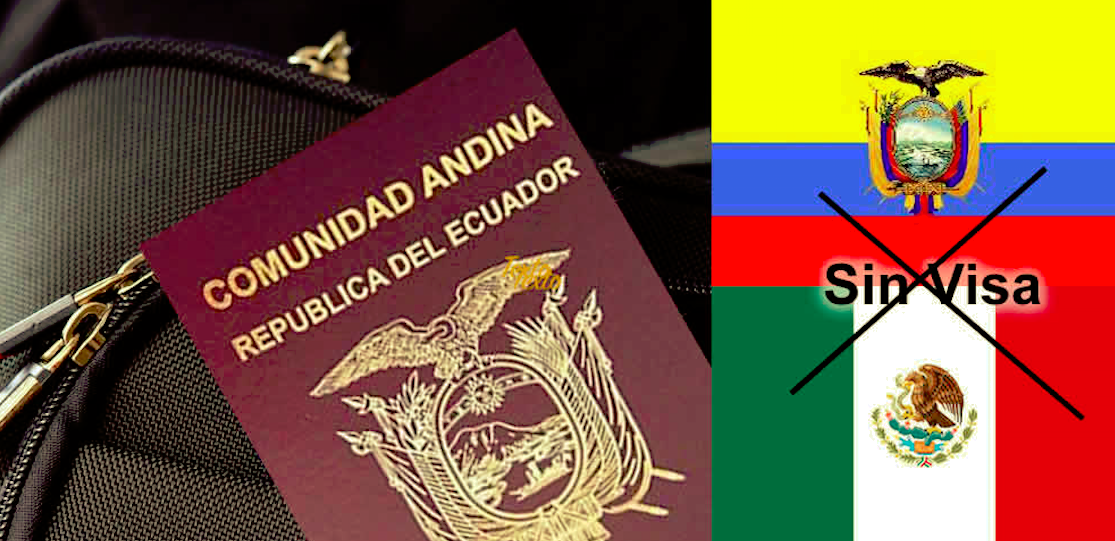RIO DE JANEIRO, BRAZIL – The signals accumulate. Mexico and Guatemala have decided to demand a tourist visa from Ecuadorians to stop the avalanche of people who, more than leisure, are looking at these countries as a route to migrate to the United States.
The number of detainees expelled or deported at the border has reached 89,000 until August, and of the 29 cases of disappearances, there is still no news of 17.
Irregular migration has intensified as Ecuador’s economy is depressed, jobs are destroyed, and poverty rates skyrocket. The president of the country, Guillermo Lasso, has described it as a “survival” migration.
Read also: Check out our coverage on Ecuador
“This phenomenon will not stop because they require a visa, migration has not stopped in the last 20 years,” says William Murillo, founder of 1800migrantes.com, who has been giving legal assistance to those who decide to leave their country for years. He diagnoses what has been happening for three years: “This 1,500% boom has a name and is that of the Mexican government for having given the benefit of eliminating the visa for Ecuadorians in 2018.”

Murillo assures that he had previously warned that there would be a knock-on effect, and three years later, the figures and the administration of Andrés Manuel López Obrador prove him right. In 2018, the first visa-free year to fly to Mexico from Ecuador, 4,000 visitors stayed there.
In 2019, there were already 30,000 who went on vacation but did not return home. And although the pandemic reduced the flow to 9,000, inertia returned to the upside this year.
Mexico is the most direct way to reach the United States. A flight to the capital or Cancún puts Ecuadorian migrants on the route to border states to cross on foot to the United States.
When the tourist visa requirement was withdrawn, whole families with children included – 6,000 in three years – began to join who, until that moment, did not dare with what is called the long way, the one that runs through Colombia, Panama, Costa Rica, Nicaragua, Honduras, and Guatemala.
Now that Guatemala also requests a visa for the arrival of Ecuadorian tourists, there are five countries left in that Central American strip of free entry: Belize, El Salvador, Honduras, Nicaragua, and Panama. “Now there are three barriers, but they are still going to travel, the only thing is that there will be no more children,” predicts Murillo. Through the Caribbean, there is a third formula, which involves traveling to the Bahamas, Cuba, or the Dominican Republic and then trying to reach the Straits of Florida embedded in tours.
In Ecuador, only three out of 10 people have a formal job. The Vice Minister of Mobility, Luis Bayas, acknowledged that the situation is “heartbreaking.” According to figures from two weeks ago, the authority offered state assistance to the 218 Ecuadorians who were held in Mexican “immigration stations” for trying to reach the United States.
The coyotes charge US$15,000 per person for irregular travel from Mexico. “That is if they don’t kidnap you because then it goes up to US$25,000 or US$30,000,” they clarify from 1800migrantes.com. According to the Foreign Ministry, Ecuador has helped with the repatriation of 448 bodies since 2014 through consular offices abroad and in the country recovered in Central, North, and South America. But Murillo, the founder of the team of lawyers, questions the lack of a state policy to address the problem of irregular migration.
On the one hand, he points out that the country’s structural economic problems, which are causing the departure of desperate Ecuadorians, are not being addressed. But he goes further in his criticism. “Ecuadorians who are abroad sending millions of dollars in remittances, that’s why they don’t take the problem seriously.” As an example, Ecuador has convened 21 mobility tables in the last ten years and, Murillo concludes, “only now are they going to find out what the causes are.”
President Guillermo Lasso brought the issue of the migratory wave to the last session of the United Nations General Assembly on September 21. He recognized that it is no longer just a matter of looking for opportunities in other countries but that citizens who leave their homes do so for their “very survival.”
In his recipe, Lasso called for intensifying business relationships. “Ladies and gentlemen, let us make opportunities seek citizens, and not citizens migrate in search of opportunities. We should be connected through free trade than through forced migration.”
The experience of migrant lawyers has allowed them to profile the reasons that force Ecuadorians to move to the United States, assuming the risks of doing so irregularly. There is economic migration, another of violence – escaping threats – and another of family reunification. “These are people who ask for a visa and are denied it many times. So, they choose the irregular route ”, explains Murillo.
The migrants often have a family network in the U.S. that helps them settle down and find a job. That point is fundamental, he assures. “Why not go to Australia, Germany, or Dubai, which are attractive economies due to their level of progress? Because they don’t have a support network there.”

